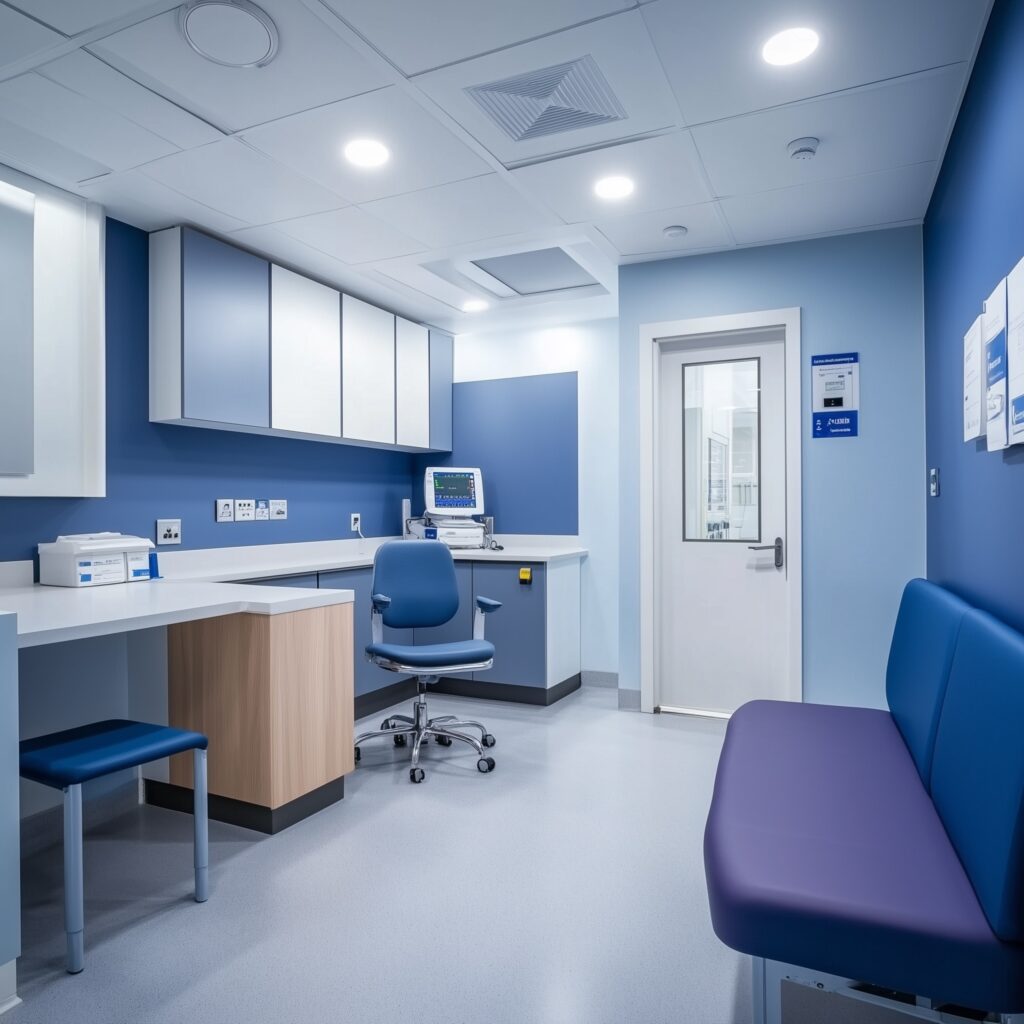Sticking plaster or turning point?

The NHS has been starved of investment for more than a decade, with results that are plain to see. Is Rachel Reeves’s boost to public investment enough to stop the downward spiral and deliver the government’s ambitions for health and care? Craig Ryan reports.
Let’s not get carried away. In her October Budget, chancellor Rachel Reeves announced a big increase in capital investment in the NHS in England — around 11% in real terms over the next two years. Great. But here’s a sobering fact: even if the entire capital budget of £13.6 billion for 2025-26 was spent on NHS buildings, it wouldn’t even cover the maintenance backlog, let alone pay for any new hospitals or all the investment in medical equipment, technology and training the NHS so badly needs.
So this a good stride in the right direction, but not a game changer. In his recent report, Lord Darzi said that being “starved of capital” for 15 years was one of the big reasons for the “dire state” of the health service. But NHS leaders can’t even use all the meagre investment funds they do have, thanks to continual raids on capital budgets. That hasn’t stopped. Budget documents reveal that £876m has already been diverted this year from long-term investment to fund day-to-day IT costs and staff pay.
This historic lack of commitment to investment has left us with a record £14 billion maintenance backlog for NHS buildings. “Vital bits of the NHS are literally falling apart,” says Saffron Cordery, deputy chief executive of NHS Providers, “putting quality of care and sometimes the safety of patients and staff at risk”. She welcomes the new government’s commitment to capital investment but, “after years of under-investment and severe staff shortages”, she warns “we must be realistic about the speed of progress.”

Targeted investment
With almost limitless demands, how the new investment funds are targeted will be critical, says Anita Charlesworth, chief economist at the Health Foundation. As a recent report from the Institute for Government (mip.social/ifg-capital) shows, capital budgets have “not always been spent well or in full”, she says. “Politicians tend to be attracted to centrally dictated, big new projects over maintaining existing assets or investing in smaller local projects.”
But she sees “encouraging signs” in the Budget announcement of a £1.5 billion investment in surgical hubs and diagnostic scanners, and a £2 billion fund earmarked for new NHS technology.
There was also a welcome nod towards investment in primary care, with a £100m pot for renovating GP surgeries. Darzi was particularly critical of the government’s failure to invest in primary care services; figures produced for the review show that the share of NHS capital spending going to primary care fell from 6% in 2018 to just 2% last year.
With more than 6,300 GP surgeries in England, £100m might seem like small beer. But when the existing pot is so small, it marks quite a change. “Our members working in primary care have been raising concerns about their estate for months with us now, so this specific capital funding for primary care is incredibly welcome,” says Ruth Rankine, the NHS Confed’s director of primary care.
GP surgeries are already seeing a record number of patients, Rankine says, and with winter approaching, she urged ministers to make sure the funding process did not leave surgeries “bogged down with bureaucracy”. She sees the move as a “down payment” on the investment needed to realise the government’s ambition to shift NHS resources from hospitals to primary and community care.
International outlier
But that will demand a much bigger shift in attitudes to investment, comments Jennifer Dixon, chief executive of the Health Foundation. The UK has become an “an international outlier”, she says, with levels of healthcare capital investment well below those of EU countries. “If the government is serious about its commitment to prevention, it should follow the changes to its fiscal rules by strengthening the fiscal framework to boost and protect prevention spending,” she says.
The changes Reeves did announce in the Budget fall far short of this. The new “Persnuffle” target for government debt (see opposite) has given the chancellor some much-needed headroom for borrowing in the short-term, enabling her, among other things, to find that extra £25 billion for the NHS. In the longer term, it’s unlikely to make much difference to the NHS because borrowing to invest in new buildings and equipment, as well as prevention and public health programmes, will be subject to the same constraints as before.
This leaves the government without a clear strategy for funding the shift from treatment to prevention in the NHS, adds Health Foundation chief economist Anita Charlesworth. “Like capital spending, prevention is a form of investment, delivering benefits long into the future with the added challenge that often the benefits are diffuse – spread across multiple public services,” she explains. Developing a fiscal framework to protect prevention spending is “unfinished business” for the government’s spending review, now expected in the spring, she says.
Bias against investment
That fiscal framework — the set of rules the government uses to measure and target spending, taxation and debt — has often been blamed for the UK’s poor record on both private and public investment. The UK has had the lowest investment in the G7 for 24 of last 30 years, and many economists see this as the major cause of the low economic growth we’ve seen since the financial crisis of 2007-8.
Former cabinet secretary Sir Gus O’Donnell and a group of eminent economists wrote to the chancellor before the Budget, calling for a “step change in levels of the public investment” and blaming the fiscal framework for “creating an inbuilt bias against investment”. Underinvestment, the letter says, “has resulted has resulted in a vicious circle of stagnation and decline”, leading to “both a weaker economy and greater social and environmental problems, which themselves require greater investment to solve.”
This Budget won’t turn all that on its head. But the chancellor has at least reversed years of decline and signalled a fresh attitude towards public investment. Let’s hope this is the beginning of the end for the cheeseparing, short-term thinking which has dogged the NHS and other public services for as long as most of us can remember. //
Persnuffle and the golden rule
Government tax and spending decisions are governed by two ‘fiscal rules’. One is the so-called ‘golden rule’: that day-to-day spending must be covered by taxes over the medium term (five years). In short, this means the government should only borrow to invest. The second rule is that the government’s ‘net debt’ should fall as a proportion of GDP within five years. It’s this second rule that Rachel Reeves has changed in her bid to boost public investment.
You might think that ‘net debt’ means everything that you owe minus everything you own. But government accounting doesn’t work like that. The old ‘net debt’ measure only sets off a few assets – basically cash and foreign exchange reserves – against government borrowings. Reeves’s new measure, Public Sector Net Financial Liabilities (nicknamed ‘Persnuffle’ by economists) widens that to include financial assets. If the government borrows to lend money to someone else, or to buy a stake in a private company, it can net off the value of those investments against debt.
But Persnuffle doesn’t include physical assets, so the new rule won’t allow the government to borrow more to spend on hospital buildings, scanners or IT equipment without adding to debt.
Office of Budget Responsibility chair Richard Hughes called the move “an innovation in the UK and relatively novel internationally”, warning that it could create “a strong incentive” to invest in financial instruments “when it would be more efficient to invest directly in infrastructure”.
So why do this? One reason could be that the new measure is in better shape than the old one — giving the chancellor scope for extra borrowing over the next few years (about £50 billion according to the OBR). Another reason could be that it will allow government projects like the National Wealth Fund and GB Energy to acquire assets without adding to government borrowing.
Oxford economics professor and leading fiscal policy expert Simon Wren Lewis sees little value in the new rule. “Counting financial assets but ignoring physical assets still makes little economic sense, so the new debt rule run alongside the golden rule still has no purpose other than to suppress public investment,” he says.
Related Stories
-

Professional regulation: still more questions than answers
After the government unveiled a new barring scheme for board-level executives this summer, plans for regulating NHS managers became a little clearer. But many big questions about how the NHS will regulate, support and develop its future leaders remain unanswered. Rhys McKenzie reports.
-

We’re proud of what MiP has done – managers need it more than ever
As MiP reaches its 20th birthday, general secretary Christina McAnea re-affirms UNISON’s commitment to the unique joint venture that has given NHS management a home and a voice.
-

Forget Musk’s slash and burn—this is what real change looks like
How the NHS can do better without more money is the big question the ten year plan needs to answer. Health economist Andi Orlowski argues for making change with consensus rather than a chainsaw — and explains why ‘allocative efficiency’ is our best bet for real reform.
Latest News
-

Government proposal for sub-inflation pay rise “not good enough”, says MiP
Pay rises for most NHS staff should be restricted to an “affordable” 2.5% next year to deliver improvements to NHS services and avoid “difficult” trade-offs, the UK government has said.
-

Unions refuse to back “grossly unfair” voluntary exit scheme for ICB and NHS England staff
NHS trade unions, including MiP, have refused to endorse NHS England’s national voluntary redundancy (VR) scheme, describing some aspects of the scheme as “grossly unfair” and warning of “potentially serious” tax implications.
-

Urgent action needed retain and recruit senior leaders, says MiP
NHS leaders are experiencing more work-related stress and lower morale, with the government’s sweeping reforms of the NHS in England a major factor, according to a new MiP survey.